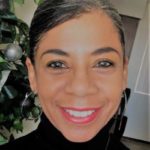Tourists and aspiring expats know to expect challenges when navigating unfamiliar places. Fortunately, because of the need for tourism revenue, most popular destinations are tourist friendly and strive to make your stay effortless. But some characteristics that Europeans take for granted might throw you for a loop.
An example that I learned of recently here in Italy I found especially peculiar.
As it turns out, speed limits in certain areas are implicit, with road signs letting you know how fast you should be going based on a name, not a number.
BUA signs
I met Roy Lin and his family on a recent vacation, and Lin, a young software engineer with Google Maps in New York, enlightened me about Italy’s Build Up Area (BUA) signs. As Lin explained, BUA signs are city name signs denoting entering and exiting a given city.
In the United States, these are simply known as city limit signs. However, in Italy and across much of Europe these signs have another, more implicit meaning: legal speed limits. Established under the 1968 Vienna Convention on Road Signs and Signals, and documented on the United Nations Treaty Collection (UNTC) website, BUA signs have been around for quite a while – much to the surprise of many visiting drivers.
In Italy specifically, these are white rectangular signs with a black border and black text. When crossing a BUA sign, the legal speed limit for the road becomes 50 kilometers per hour. This speed limit is in effect for the duration of your drive in the city. Then, when you leave that city, the end of that speed limit is denoted by a BUA end sign (a city sign with a red slash across it).
This effectively means you have left the city limits and can drive at the posted explicit speed limit.
So, is it just me, or is this all utterly mind-blowing? How would a tourist know the speed limit if it’s only implied?
Google minimizing the madness
Thankfully, Google recognized the madness a few years ago, and implemented an effort to make the needed information available to tourists and others not in the know. Lin undertook the considerable work of creating a program, using computer vision, that would enable drivers to find speed limits in Google Maps Street View.
(My first question was, What the heck is computer vision? According to IBM, it’s a field of artificial intelligence that enables computers and systems to derive meaningful information from digital images, videos and other visual inputs and take actions or make recommendations based on that information.)
The development and rollout of this speed limit accessibility began in 2019. Italy was one of the regions that fell to Lin, and his vacation tour here was his first opportunity to see the fruits of his labor. While I’m not a driver here in Italy, those I’ve talked with don’t seem to find it any more complicated than other parts of the European Union. But, all agree that being able to readily access speed limits (as well as speed cameras) that aren’t clear from signage is invaluable.

Other signs that are ubiquitous around Italy and important to know are Zona Traffico Limitato (ZTL) and Area Pedonale (pedestrian zone) signs. Particularly in historic centers, but actually just about everywhere, streets are narrow and space is limited. Parking, and even driving, in these regions is often prohibited.
Of course, hotels and car rental centers can usually provide all the common rules of the road you’ll need. The key is simply to be aware.
Making a home here in Italy would not have been possible without the angels I’ve met along the way to explain things I would never have known otherwise.
Similarly, those who work behind the scenes to provide the help we didn’t know we needed are owed a debt of gratitude for providing us the luxury of not always having to do the heavy lifting ourselves.
As one who is admittedly technologically challenged, I’m constantly in awe of the genius of today’s tech wizards. Today, driving in Italy is easier and safer because of the Roy Lins of the world.
––––––––––
Carla Bastos is a freelance writer and former journalist and newspaper editor. Having lived in developing countries and covered wars and natural disasters, she has written extensively on a variety of related topics. Her book “Getting Out” chronicles her expat experience, offering suggestions and takeaways that will benefit other aspiring expats
Read more of Carla Bastos’ work for Dispatches here.
Carla Bastos is an expat writer living in Italy.















